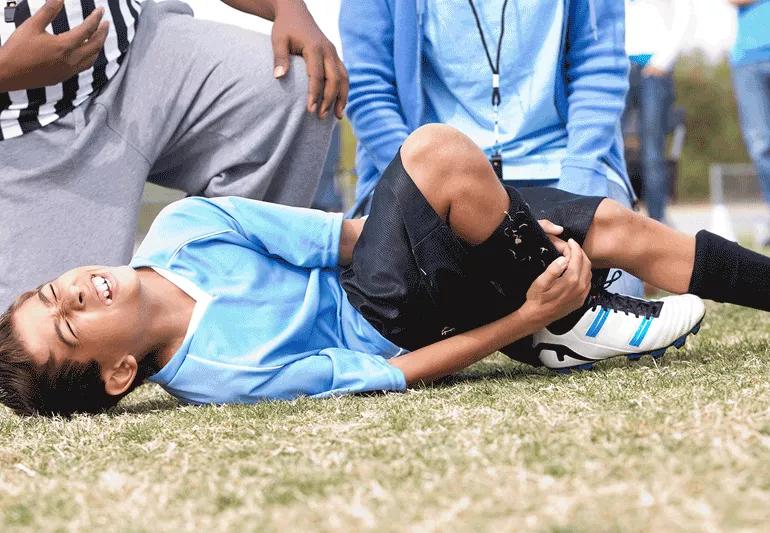Plus, six ways to tell if it’s a broken bone

“I can’t move my arm!” “It hurts when I walk!” If you have active kids, you’re used to them telling you (dramatically) about all their bumps and bangs. Most of the time, they brush it off and a few minutes later are back on the monkey bars or sliding into first.
Advertisement
Cleveland Clinic is a non-profit academic medical center. Advertising on our site helps support our mission. We do not endorse non-Cleveland Clinic products or services. Policy
But sometimes, it’s not just dramatics — you’re worried something may actually be broken. Since you haven’t developed X-ray vision eyes (well, YET), how can you tell if it’s a sprain or a fracture?
Orthopaedic specialist Michael Star, MD, breaks down the difference — and explains when it’s time to enlist a doctor’s help.
Put simply, fractures are broken bones. And broken bones come with one or more of these telltale signs:
A sprain is a ligament injury. Ligaments are the soft tissues that connect two (or more) bones at a joint, such as the ankle, knee or elbow.
While the signs of a sprain are often less obvious than fracture symptoms, there is some overlap:
Tenderness in your soft tissue (“If you look at the back of your wrist on the pinky side, there’s a bone that sticks out a little bit. You can also push down on the thumb side and feel a bone there. If you have a sprain, it will feel swollen and tender all over the wrist and not just on the bone parts,” explains Dr. Star.)
Advertisement
You can give the injury three days to improve if:
Follow the RICE acronym for the first 24 to 48 hours to give your child some relief:
“If the swelling gets better and it’s less tender within a couple of days, your child is most likely OK,” relates Dr. Star. “But if it doesn’t get better within two to four days, then you should see a doctor.”
When it comes to sprains, kids aren’t adults in miniature. While some adults can tough it out, Dr. Star advises against using that approach with children.
“Kids can injure something called the growth plate. That can affect how they grow over time. So parents should treat their children’s potential sprains more rigorously than they would their own,” says Dr. Star. “Any child who’s still growing should be evaluated to make sure they don’t have a fracture. And the only way to rule one out is to get an X-ray.”
Dr. Star also emphasizes the need to see a doctor if a significant cut or other wound accompanies the injury. “The wound may need to be addressed separately. It also may need to be treated more aggressively with antibiotics and cleaning.”
What type of doctor should you see? Any doctor that can provide a basic evaluation and take an X-ray. Medical facilities that provide these services include:
Advertisement
Learn more about our editorial process.
Advertisement

Jaundice that’s present at birth or lasts more than a week should be evaluated by a pediatrician

There’s more than one way to potty train, but this intensive method can kickstart the process

Clean your baby’s mouth with a washcloth or small toothbrush if they have a tooth or you suspect thrush

A glass child is the sibling of someone with special needs — often seen as the easy one, but carrying invisible burdens

Plus, ways to keep your bones healthy and strong!

Bone health starts with proper nutrition, exercise and healthy lifestyle choices

Babies can be noisy little sleepers! Blame small nasal passages and short sleep stages

Yes, you can have honey if you’re breastfeeding — but never feed it directly to babies under 1

If you’re feeling short of breath, sleep can be tough — propping yourself up or sleeping on your side may help

If you fear the unknown or find yourself needing reassurance often, you may identify with this attachment style

If you’re looking to boost your gut health, it’s better to get fiber from whole foods